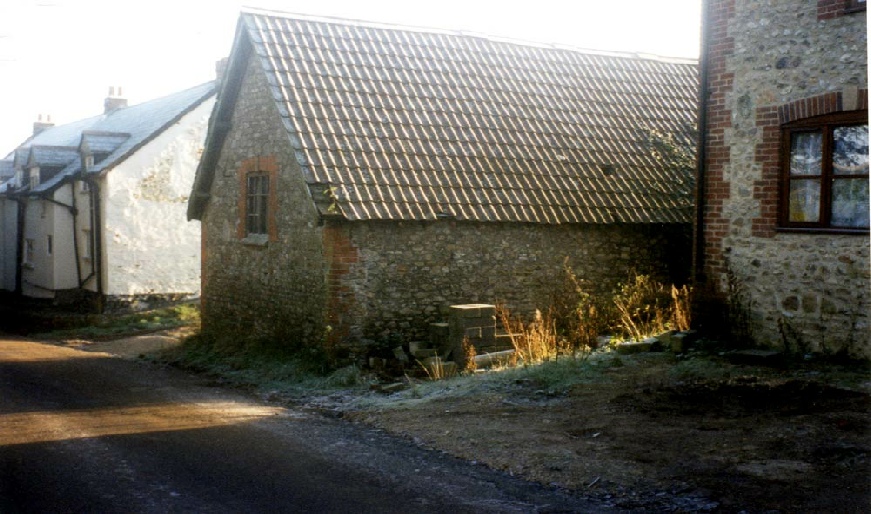BEGINNINGS
In 1986 following changes in West Dorset District Council (WDDC) planning policy
Thorncombe village was earmarked as a 'priority area'. Under WDDC's ten year Rural
Development Plan the brakes on the development of Thorncombe were effectively removed.
The Plan enabled the building of 150 new houses which meant that the size and population
of the village could double by 1996. The idea behind the new council policy was to
encourage families with children to move to villages, which would sustain the local
shops, post offices and schools. On paper it sounded wonderful and some parishioners
welcomed it, others took a more measured view.
The going market price of privately built new family homes and lack of local regular
well paid jobs within easy commuting distance potentially put them beyond the pocket
of most young families needing to raise mortgages. Those who also valued the unspoilt
character of Thorncombe village, its peace and way of life, feared that the building
of large numbers of new houses on previously green fields would change its character.
And given the lack of a regular bus service, there was the unanswered question of
how the narrow lanes around the village would cope with increased traffic.
Higher Farm Development
A planning application to develop Higher Farm (formerly known as Workhouse Farm),
where Orchard Lane stands today, was submitted hot on the heels of the publication
of WDDC's Rural Development Plan. As well as converting the Grade 11 listed 18th
century farmhouse into eight holiday homes, the proposed development included an
industrial unit, 25 houses and a new farmhouse. Following an extraordinary parish
council meeting on 28 February 1986, 68 parishioners voted unanimously in favour
of requesting WDDC through the parish council to give them more time to consider
the application and respond.
Since 1982 a small group of parishioners with interests in Thorncombe’s natural and
local history and walking its extensive network of footpaths and bridleways had
been meeting informally. Following the outcome of this extraordinary parish meeting,
such was their concern at the prospect of 150 new houses, the group decided to
form Thorncombe Village Trust to explore how best to protect Thorncombe's special
qualities and give the significant number of objectors a voice. The Trust was formally
constituted, a committee convened and officers appointed on 14 May 1986.
Tansee Hill & Orchard Lane
The campaign to stop Thorncombe being doubled in size lasted more than a decade and
resulted in a compromise which has indeed changed the community, though not perhaps
as the planners anticipated as very few of the new houses have been bought by young
families with children. After considerable lobbying of WDDC by Thorncombe Parish
Council and Thorncombe Village Trust, Tansee Hill and Orchard Lane were eventually
built on the outskirts of Thorncombe in 1999.
The number of new houses totals 56, including 14 public housing units for which
those with local connections get priority. A planning inquiry in 1999 upheld local
objections to an application to develop approximately ten acres of land on the southwest
boundary of Thorncombe village which if successful would have resulted in a further
48 houses, of which 8 were designated public housing, being built. The green field
site, comprising approximately 10 acres is known locally as Quinn after the developer
who sold the site on to another developer. In 2001 the development status of Quinn
reverted back to agricultural land status following a second planning inquiry.
Thorncombe's Neighbourhood Plan
WDDC's 2006 ten year Local Plan states, "The size, character, community facilities
and location of Thorncombe indicate that it is not suitable for additional development
within this Plan period." This will be the case until 2016 when the current Local
Plan expires, and so may not be the end of the matter.
Work has already begun on the next Local Development Plan for West Dorset. Recent
government changes to national planning policy are intended to address the current
housing shortage through the removal of time consuming obstacles to development in
cities, towns and rural areas. The new legislation also gives Parish Councils the
option of submitting Neighbourhood Plans. Described on the Dorset for You website
as being 'about making sure new homes and businesses can be built where and how local
people want them', Neighbourhood Plans will be taken into consideration in conjunction
with the new Local Development Plan by WDDC as part of a revised planning process.
Thorncombe Parish Council is currently considering how to proceed in this matter
and will be holding a public meeting in the New Year to explain the position and
to enable parishioners to have their say.
For further information go to https://www.dorsetforyou.com/neighbourhoodplanning/west/weymouth
The story of the TVT's beginning and what happened next on the planning front, is
told through the following selection of press cuttings which covers the period 1986
- 1987 . Our thanks to Chard & Ilminster News and Dorset Evening Echo, Pulman’s
Weekly and the Western Gazette, for giving us permission to reproduce them.
TVT Committee, December 2014


